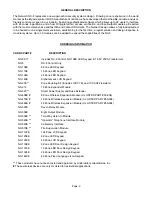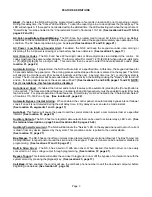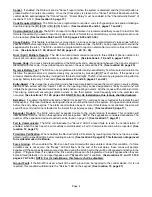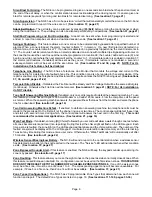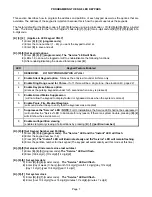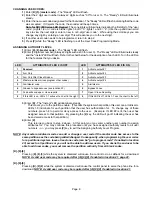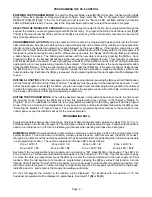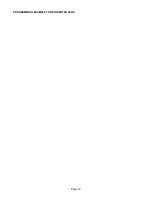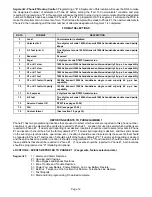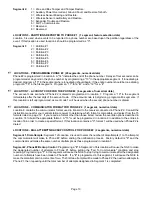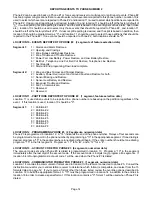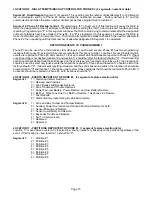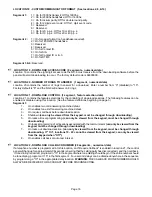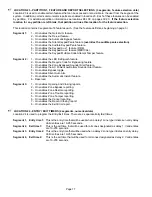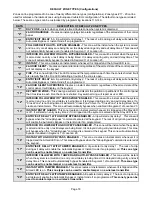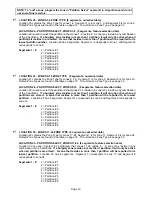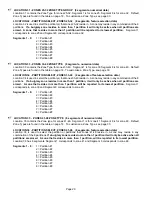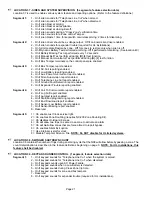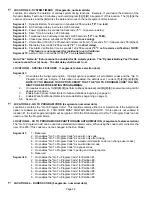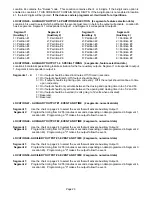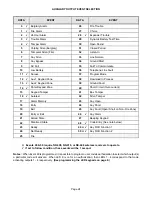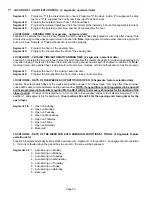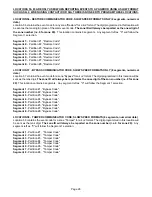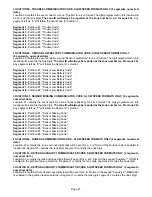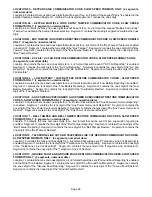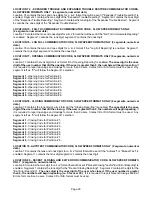
Page 14
REPORTING EVENTS TO PHONE NUMBER 2
Phone #2 can be used to back up Phone #1 or for a second receiver to multi-report or split report events. Phone #2
has two programming locations that are used to select which events are reported to this phone number. Location 10 is
used to select which events are reported to Phone #2, and location 11 is used to select which partitions are reported to
Phone #2. If dual or split reporting is not desired, location 10 and location 11 should be left at the factory default of
"0". If multi-reporting or split reporting is desired, and the split is based on the event type (such as alarm, open close
etc.), location 10 should be used to select only those events that should be reported to Phone #2, and location 11
should be left at the factory default of "0". If dual or split reporting is desired, and the split is based on partition, then
location 10 should be programmed as "0", and location 11 should be used to select those partitions that should be
reported to the Phone #2. If no events should be reported to Phone #2, both locations should be "0".
LOCATION 10 - EVENTS REPORTED TO PHONE #2 (2 segments of feature selection data)
Segment 1:
1 = Alarms and Alarm Restores.
2 = Opening and Closings.
3 = Zone Bypass and Bypass Restores.
4 = Zone Trouble and Trouble Restores.
5 = Power Fail, Low Battery, Power Restore, and Low Battery Restore.
6 = Bell Cut , Telephone Line Cut, Bell Cut Restore, Telephone Line Restore.
7 = Test Reports.
8 = Start and End programing, Download complete.
Segment 2:
1 = Zone and Box Tamper and Tamper Restore.
2 = Auxiliary Power Overcurrent and Ground Fault and Restore for both.
3 = Sensor Missing and Restore.
4 = Sensor Low Battery and Restore.
5 = Expander Trouble and Restore.
6 = Fail To Communicate.
7 = Reserved.
8 = Reserved.
LOCATION 11 - PARTITIONS REPORTED TO PHONE #2 (1 segment, feature selection data)
Location 11 is used when events to be reported to a phone number are based upon the partition regardless of the
event. If this location is used, location 10 should be "0".
Segment 1:
1 = Partition #1
2 = Partition #2
3 = Partition #3
4 = Partition #4
5 = Partition #5
6 = Partition #6
7 = Partition #7
8 = Partition #8
LOCATION 12 - PROGRAMMING PHONE #3 (20 segments, numerical data)
Phone #3 is programmed in location 12. A "14" indicates the end of the phone number. Delays of four seconds can
be programmed at any point in the phone number by programming a "13" in the appropriate segment. If tone dialing is
desired, program a "15" in the segment where tone dialing should begin. If the entire number should be tone dialing,
program a "15" in the first segment. Program an
A
11" for a
A
r
@
, and a
A
12" for a
A
#
@
.
LOCATION 13 - ACCOUNT CODE FOR PHONE #3 (6 segments, numerical data)
The account code sent when Phone #3 is dialed is programmed in location 13. Program a
A
10" in the segment
immediately after the last digit of the account code. If the account code is 6 digits long, program all 6 segments. If
location 6 is left unprogrammed, account code 1 will be used when the Phone #3 is dialed.
LOCATION 14 - COMMUNICATOR FORMAT FOR PHONE #3 (1 segment, numerical data)
Location 14 contains the communicator format used to transmit to the receiver connected to phone #3. Consult the
instruction manual for your central station receiver to determine which format is compatible, and select from the 15
formats listed on page 12. If you require a format other than those listed, review the override options described in
Location 18 to build the appropriate format. A "15" must be programmed in location 14 in addition to the entries in
location 18 in order to create a special format. If this location contains a "0", format 1 will be used when Phone #3 is
dialed.


